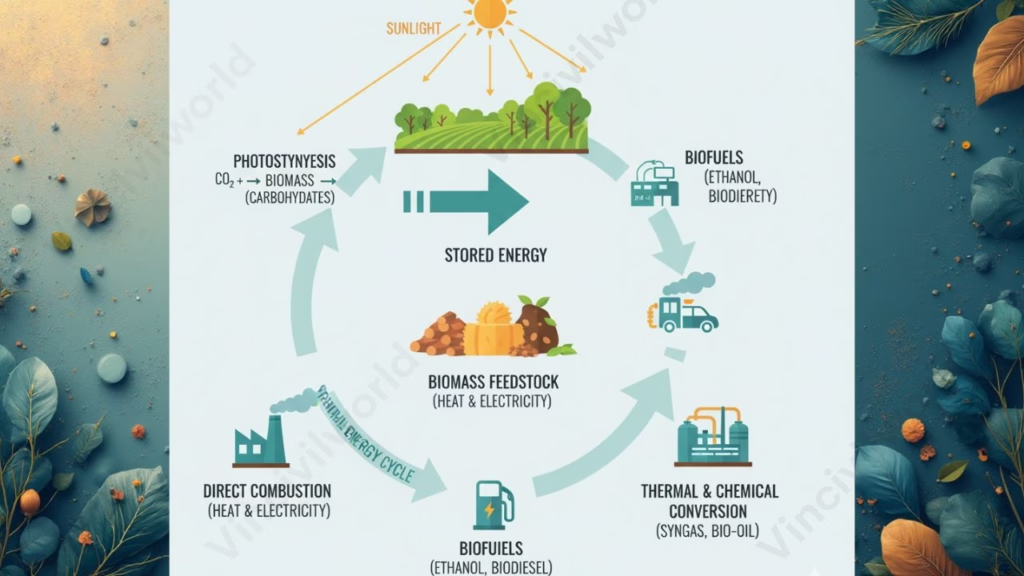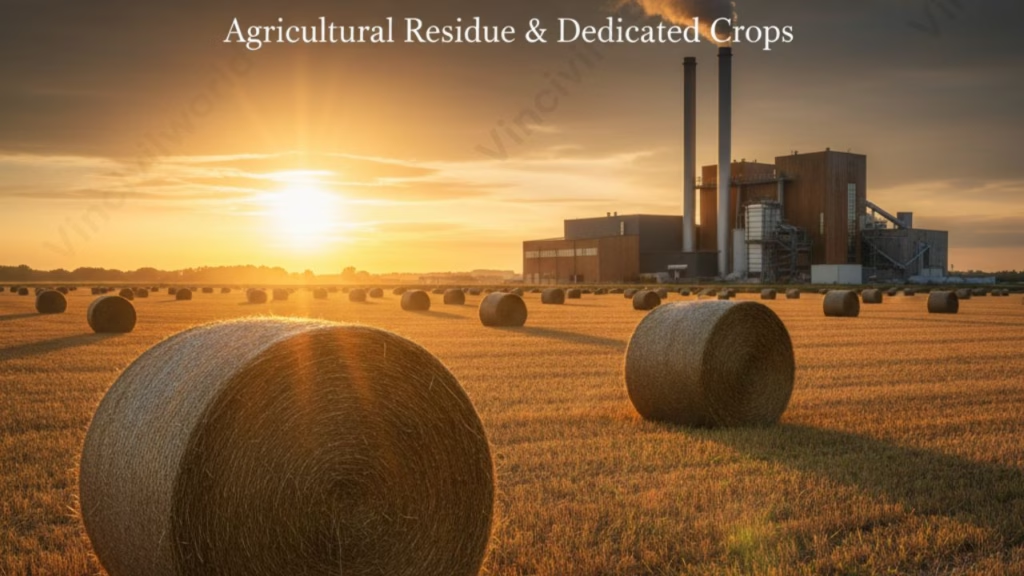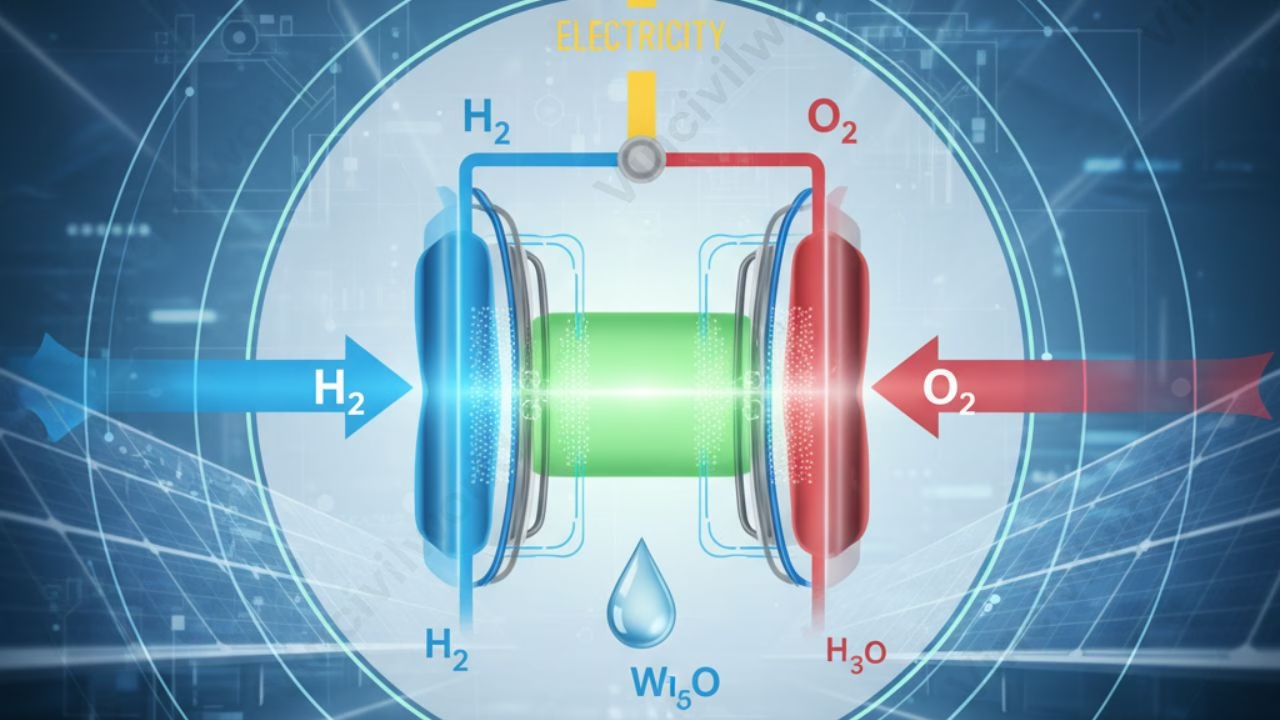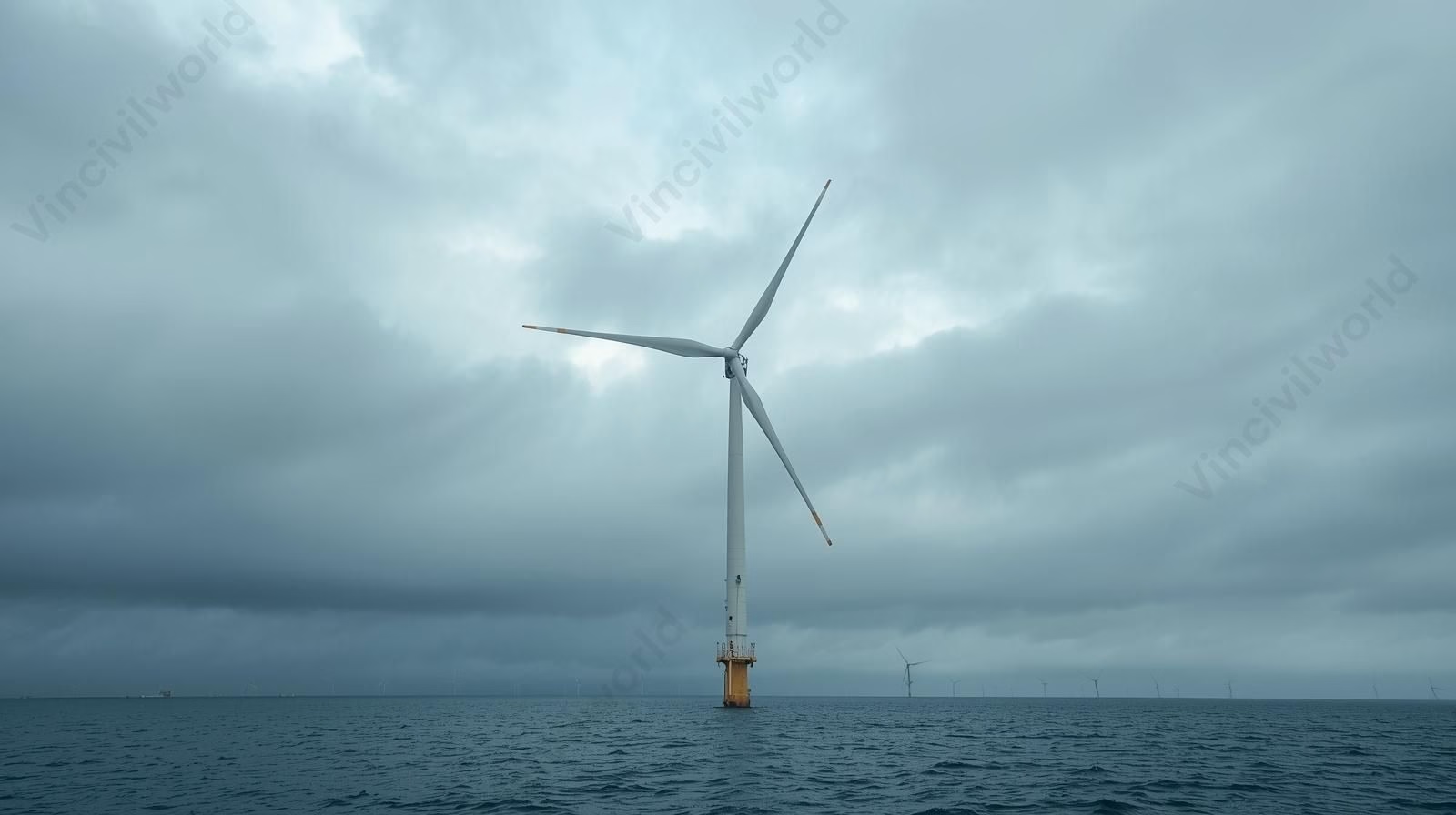Biomass Energy is hailed as a renewable source of energy and a method for sustainable waste disposal. Biomass energy harnesses organic matter to create power, standing as a significant player in the renewable energy landscape. Understanding how biomass energy works involves exploring the various processes that convert organic materials into usable heat, electricity, or fuel. As we consider its role, it’s essential to examine the comprehensive advantages and disadvantages of biomass energy, evaluating its environmental impact, cost-effectiveness, and resource demands. Diverse sources of biomass energy, from agricultural waste to dedicated energy crops, underpin its versatility. This energy form boasts numerous biomass energy applications, powering homes, industries, and transportation. Looking forward, the future of biomass energy holds immense potential for innovation and expansion, contributing to a more sustainable global energy mix.
Table of contents
How biomass energy works?
Biomass energy is energy generated or produced by living or once-living organisms. Plants receive the sun’s energy through photosynthesis and transform carbon dioxide and water into nutrients. They store this energy in biomass (carbohydrates).
We can convert this stored energy from biomass into usable energy in both direct and indirect ways. We can burn biomass directly to provide heat, turn it directly to electricity, or process it into biofuel (indirect).
Sources of Biomass Energy
Today, wood and wood wastes are the most common biomass energy sources. We can burn wood directly or convert it into pellet fuel or other fuel forms to generate energy. Other plants that can serve as fuel include corn, switchgrass, miscanthus, and bamboo. Wood waste, agricultural waste, municipal solid waste, manufacturing waste, sewage sludge, and landfill gas are the most common waste energy feedstocks.
How biomass energy convert to Thermal Energy ?
Thermal conversion involves the application of heat to convert biomass to energy. The biomass feedstock is heated to burn, dehydrate, or stabilize by thermal conversion. Raw materials such as municipal solid waste (MSW) and scraps from paper or timber mills are the most common biomass feedstocks for conversions involving biomass energy.
The following processes produce different types of energy from biomass:
- Direct firing
- Co-firing
- Pyrolysis
- Gasification
- Anaerobic decomposition
We must dry the biomass first before burning it. This process is called torrefaction. We heat biomass to around 200° to 320° Celsius (390° to 610° Fahrenheit) during torrefaction. The biomass dries out to the point that it can no longer absorb moisture and rot. It loses around 20% of its original bulk but keeps 90% of its original energy.
Torrefaction turns biomass into a dry, blackened substance from which we make briquettes. Briquettes made from biomass are hydrophobic, which means they reject water. This allows their storage in damp environments. The briquettes have a high energy density and are simple to burn when used in direct or co-firing applications.
Also read: Solar Energy- Definition, Advantages and Future
Direct Firing and Co-Firing
The majority of briquettes from torrefaction undergo direct burning. The steam generated during the firing process drives a turbine, which in turn drives a generator, which generates energy. This electricity can power machines or heat structures.
Biomass can also undergo co-firing, which means burning the briquettes along with fossil fuel. Biomass undergoes frequent co-firing with coal in power facilities. Co-firing reduces the requirement for additional biomass processing facilities and the demand for coal as well. Also, it reduces the amount of carbon dioxide and other greenhouse gases released by burning fossil fuels.
Pyrolysis
We heat biomass to 200° to 300° C (390° to 570° F) in the absence of oxygen during pyrolysis. This prevents it from combusting and changes the chemical composition of the biomass. Pyrolysis creates pyrolysis oil, a synthetic gas known as syngas, and a solid residue known as biochar.
Bio-oil
Pyrolysis oil or bio-oil is a form of tar. It finds application as a component in various fuels and plastics and gives energy upon burning. Scientists and engineers are researching pyrolysis oil as a possible substitute for petroleum. Indeed, its connection with biomass energy is pivotal for future sustainable alternatives.
Syngas
Syngas finds application as a fuel such as synthetic natural gas. It can also be converted to methane and used as a natural gas substitute. Clean syngas can be used for heat or energy or processed into biofuels, chemicals, and fertilizers for transportation.
Also read: Tidal Energy – Definition, Advantages, and Future
Biochar
The solid residue we obtain after the pyrolysis of biomass feedstock is biochar. Biochar has a number of merits over ordinary biomass feedstock. Let’s have a look at them.
- When biomass burns or decomposes naturally or as a result of human action it releases large amounts of methane and carbon dioxide into the atmosphere. Biochar, on the other hand, sequesters or stores its carbon content. That is it is a great carbon sink. Carbon sinks are places that can store carbon-containing compounds, such as greenhouse gases.
- When we reintroduce biochar to the soil, it can continue to absorb carbon and develop huge subsurface carbon sinks, resulting in negative carbon emissions and healthier soil.
- Biochar carbon remains in the ground for centuries, slowing the growth in atmospheric greenhouse gas levels. Simultaneously, its presence in the earth can improve water quality, increase soil fertility, raise agricultural productivity, and reduce pressure on old-growth forests
- Biochar also aids with soil enrichment. It is permeable and prevents pesticides and other nutrients from seeping into the runoff.
Gasification
Gasification directly converts biomass to energy. During gasification, we heat the biomass feedstock (typically Municipal Solid Waste) to over 700° C (1,300° F) with a controlled amount of oxygen. As the molecules break down, it produces the following two products:
- Syngas
- Slag
Anaerobic Decomposition
In landfills, anaerobic decomposition occurs when biomass is crushed and squeezed, resulting in an anaerobic (or oxygen-poor) environment. It is the breakdown of material by microbes, mainly bacteria, in the absence of oxygen.
Biomass decomposes in an anaerobic environment, producing methane, a useful energy source. This methane has the potential to replace fossil fuels.
Anaerobic decomposition can be used on ranches and livestock farms in addition to landfills. Manure and other animal waste can be processed through anaerobic decomposition to meet the farm’s energy demands sustainably.
Advantages of Biomass Energy
Here are the major advantages of biomass energy that has made it a global player in the renewable energy sector:
- Biomass is a sustainable energy source that is both clean and efficient and this is the major advantage of biomass energy.
- The sun provides the initial energy, and plants or algae biomass can regenerate in a relatively short period. Hence it is a renewable source of energy.
- Trees, crops, and municipal solid waste, which are the feedstock for biomass energy production, are all accessible regularly.
- When we sustainably grow trees and crops, they can help to offset carbon emissions by absorbing CO2 through respiration. The quantity of carbon reabsorbed in some bioenergy processes even exceeds the amount of carbon produced during fuel processing or use.
- We can collect many biomass feedstocks, such as switchgrass, on marginal lands or pastures without interfering with food crops.
Disadvantages of Biomass Energy
While biomass has various advantages, it is not an ideal energy source. We must examine its drawbacks as well which are as follows:
- Water makes up to 50% of the biomass, which escapes throughout the energy conversion process. Hence the “energy density” of biomass is lower than that of fossil fuels.
- According to scientists and engineers, transporting biomass more than 160 kilometers (100 miles) from its processing point is not cost-effective. However, turning biomass into pellets (rather than wood chips or larger briquettes) can boost the energy density of the fuel and make it easier to transport.
- To grow the materials used , we require a vast area of space. This space will not always be available, especially in densely populated places such as cities.
Applications of Biomass Energy
Biomass energy applications are diverse, leveraging organic matter across various sectors to meet energy demands sustainably. We primarily utilize biomass energy for generating electricity, often through direct combustion, co-firing with fossil fuels, or gasification processes that produce syngas for turbines. Heating is another major application, with biomass boilers providing warmth for residential, commercial, and industrial spaces, often in combined heat and power (CHP) systems for maximum efficiency. Furthermore, biomass energy applications extend to the production of biofuels like ethanol and biodiesel, offering renewable alternatives for transportation. These biofuels significantly reduce reliance on fossil fuels. Finally, specialized biomass energy applications include producing biochemicals and bioproducts, replacing petroleum-based raw materials and fostering a circular economy.
Biomass Energy Future
Energy crops must be grown in vast quantities, requiring large swaths of land, if biomass is to make a significant dent in the usage of fossil fuels. Furthermore, biomass energy must be cost-competitive with conventional energy sources and biological carbon sequestration. If we can cultivate biomass in huge amounts at cheap cost along with research, development, and early deployment of “clean coal” technologies we could lower the cost of converting biomass to electricity and liquid fuels.
Key Takeaways
- Biomass Energy is a renewable energy source generated from living organisms, which can be converted into usable forms like heat and biofuel.
- Common biomass sources include wood, agricultural waste, and municipal solid waste, while conversion methods include direct firing, pyrolysis, and gasification.
- Biomass Energy offers advantages such as sustainability, efficiency, and potential carbon offsetting, but it also faces challenges like lower energy density and transport costs.
- The future of Biomass Energy relies on large-scale cultivation, cost-competitiveness, and technological advancements in clean energy conversion.
- Overall, Biomass Energy presents a viable alternative to fossil fuels, though it requires further development to improve efficiency and mitigation of existing challenges.
Conclusion
Biomass energy has emerged as a frontrunner as a viable alternative to fossil fuels as the search for alternatives to fossil fuels continues. It is a carbon-neutral fuel source with lower costs than fossil fuels and a wide range of applications.
However, several challenges are preventing it from becoming more widely adopted. More needs to be done, in particular, to address the issue of fuel efficiency, as well as challenges such as space and cost. The utilization in particular, on a home and local level, can result in lower energy bills.
Do you have any thoughts and its prospects? Please share your thoughts in the comments section below.








